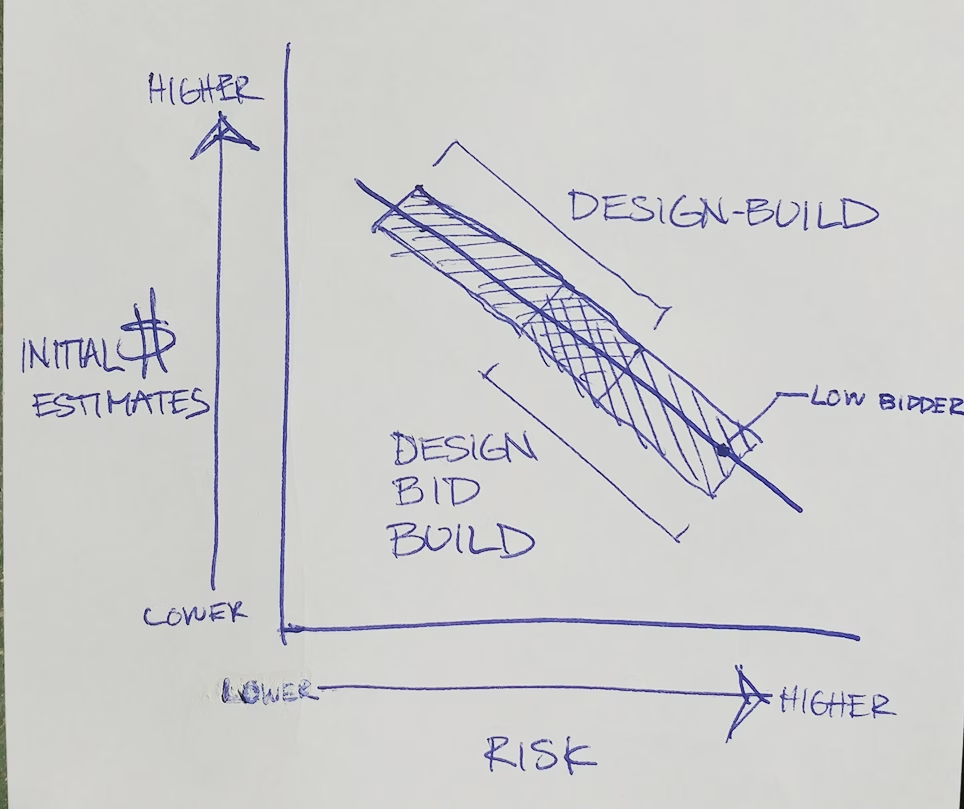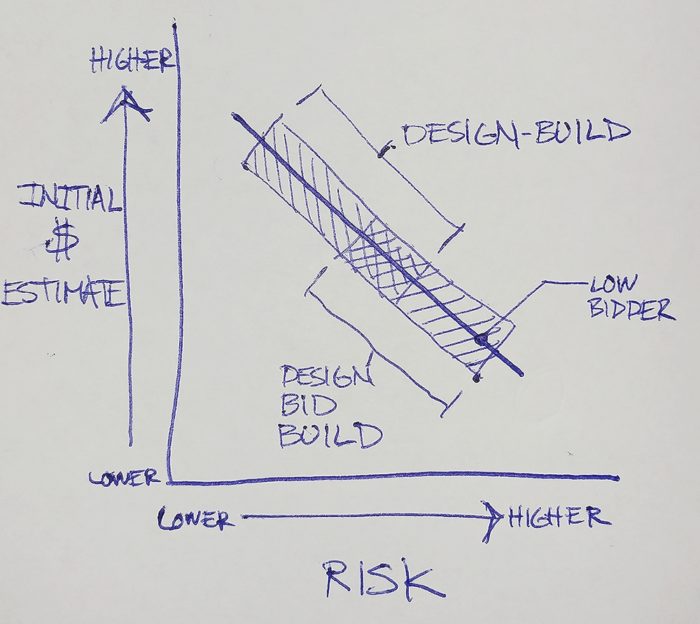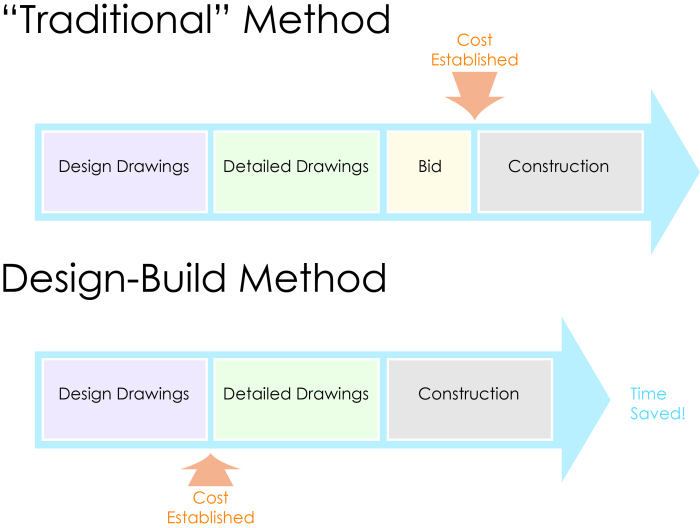Why Choose Design-Build?

Why is design-build so expensive? Turns out, it’s actually not…
This is an excerpt from Dave’s upcoming book about design-build and the design and construction industry.
I wish to lift as many spirits with spaces as possible with my career. My long-term aspirations are in large scale mixed-use real estate development. I completed a real estate development study program at MIT as an introduction. The class looked at real estate as an investment, talking about “Risk-Return Tradeoff”. The idea is that as risk increases the expected return must increase as well. This made me think about design-build, and what type of risk/return we offer our clients.

Cost versus risk in design-build and design-bid-build methods
The ideal would be to offer the lowest price for the lowest risk. This would give clients the greatest return on their investment. I came up with the graph pictured above to explain the relationship. It is important to note that the return on investment is not entirely monetary. We believe our greatest impact is improvement of our clients’ day-to-day lives. The level of design and craftsmanship relates to the improvement of our clients’ quality of life.
There is less risk in design-build because the client has one company that assumes all responsibility. Design-bid-build splits responsibility between an architect and contractor. Separating the two puts the client in the middle of any issues that arise. The premise is that there are checks and balances between professionals, reducing risk. There are huge insurance and litigation industries built around the design-bid-build process. The fact that these industries exists proves this premise false.
We find that the costs projections we give for our projects are higher than other companies. When you look at the final price paid for a project, prices are actually comparable. There is a lot of variability from the initial estimate to the total cost of the project with other methodologies. I attribute this solely to our design-build model and the culture of accountability it encourages. If a company is not responsible for the design of a project, it is easier to produce a lower estimate. That company is not responsible for designing the project to achieve that estimated cost. The “lowest bidder” often comes out to be the most expensive in dollars spent, time, and stress. We are looking to create the complete opposite of these effects. This is why design-build is so prevalent in residential remodeling.

I took a look at all the remodeling companies who are members of our local chapter of NARI (National Association of the Remodeling Industry). I found 43 design-build companies, 36 design-bid-build companies, and 10 companies that were a mix of both. Most of the design-bid-build companies reflect that they like to work with a designer very early. This is a design-build mentality. Remodeling is inconvenient and risky. Homeowners choose the least risky and most accountable company.
With an investment property a client may be more likely to risk more and choose the lowest bidder. I recently decided to GC my own investment property work and ended up 50% over budget! I know what design-build is, and know how great my team is. I chose to take more risk, and it did not pay off. I paid the same as if I had chosen design-build from the beginning. In the end, I had a much larger headache and higher stress level. My experience trying out design-bid-build was a validation of the design-build system we use. May I never stray from our beautiful system again!
Again, the goal is to provide the least cost with the least risk. In remodeling, there are many potential risks:
The list goes on!
Our clients value that real estimating is part of making the right decisions throughout the design process. Finding out costs once the design is complete can mean higher than intended cost. You could also find out that the project isn’t workable. You shouldn’t be looking for the lowest cost estimate. That type of estimate is risky and pointless without a commitment to achieve it.
Based on these points, consider the design-build method for any projects you’re contemplating. Feel free to Contact Us or learn more about design-build.
 David Supple is the owner and CEO of New England Design and Construction. He is currently working on writing a book about his experiences and thoughts in the design and construction industry. David is a graduate of Tufts University with a degree in architecture. In California, he trained as an architect for three years, designing, directing, and managing 50- 100,00 square foot renovations. He founded New England Design & Construction in 2005 and became incorporated in 2006, and rapidly expanded the company to servicing the Greater Boston Area. He is an aspiring comedian but currently he only practices with his wife.
David Supple is the owner and CEO of New England Design and Construction. He is currently working on writing a book about his experiences and thoughts in the design and construction industry. David is a graduate of Tufts University with a degree in architecture. In California, he trained as an architect for three years, designing, directing, and managing 50- 100,00 square foot renovations. He founded New England Design & Construction in 2005 and became incorporated in 2006, and rapidly expanded the company to servicing the Greater Boston Area. He is an aspiring comedian but currently he only practices with his wife.
